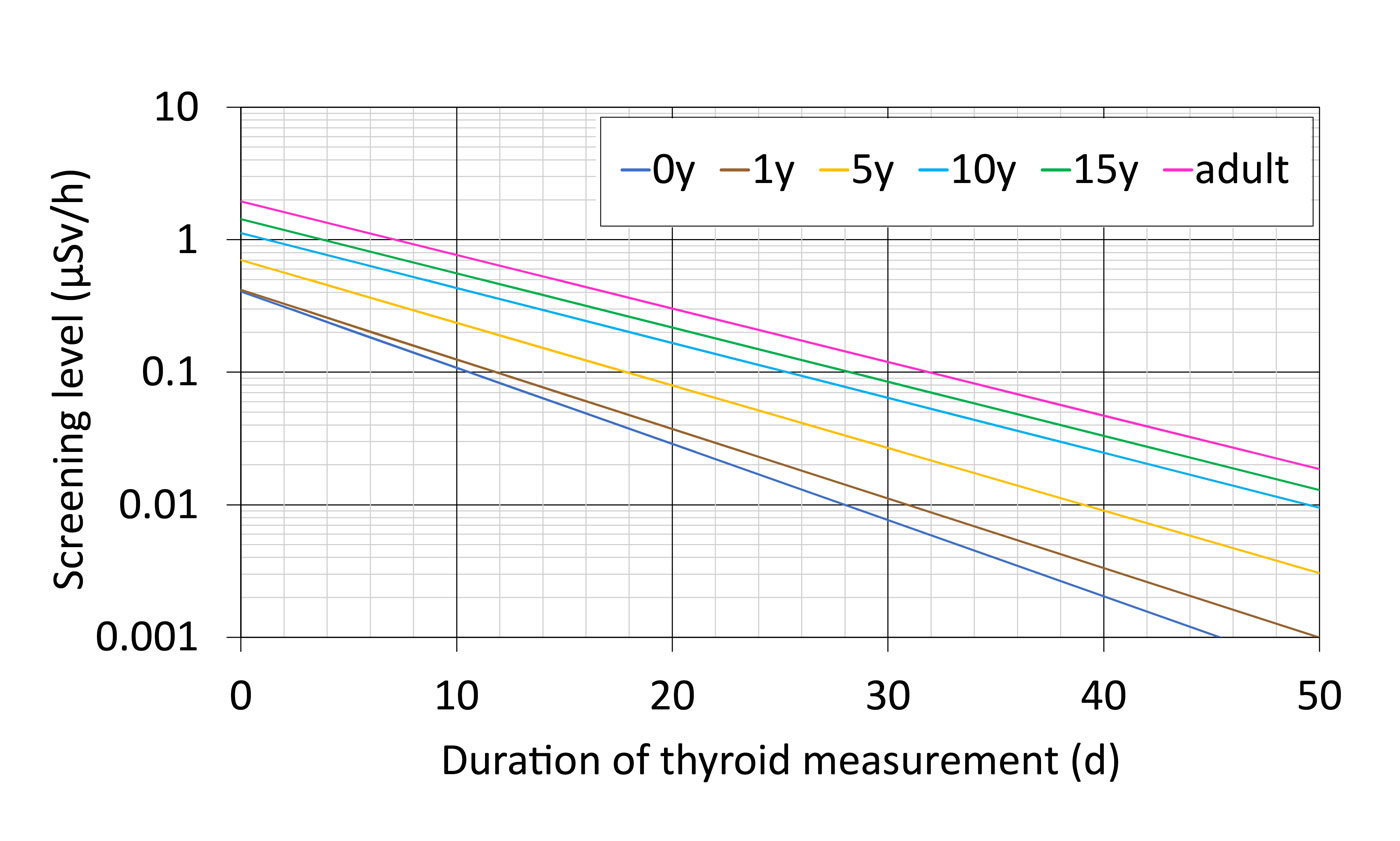 |
Topics
Approaches to Improve the Feasibility of Thyroid Measurement in the Case of a Nuclear Accident
−Consideration of Methods for Reviewing of Thyroid Measurement Screening Level−

Fig. 1 Relationship between the screening level and the duration of thyroid measurement
In the case of a nuclear accident, radioactive iodine can be released to environment. The thyroid accumulates iodine and then radioactivity is to be measured at the thyroid for residents near the plant. At first, screening measurements are carried out to specify residents exposed to higher dose by using NaI(Tl) scintillation survey meters. The duration of thyroid measurement for the screening is planned within 3 weeks after the release of radionuclides as a reference. The screening level that is utilized to specify highly exposed residents is set at 0.20 µSv/h.
However, there may be serious scenarios where we shall change the duration of measurement by the accident situation. The retention time of radioactive iodine in the thyroid depends on uptake scenario, radionuclide and chemical form of radioactive iodine. Therefore, it is necessary to appropriately review the screening level taking into account for these factors, if the duration is changed. In this study, we calculated the relationship between the screening level and duration of thyroid measurement for each assumed nuclear accident situation.
An example of the calculation results is depicted in the figure. The figure shows that the duration for all age categories is extended as screening level decreases. For example, in the case of a serious nuclear accident where a large number of residents are subject to measurement, the duration is to be extended to 30 days. It is also found that the screening level must be lowered to a range, from the lower detection limit to approximately 0.10 µSv/h, according to the age of the residents being measured.
The results in this study are expected to be used as technical information for appropriate decision-making regarding thyroid measurement.
However, there may be serious scenarios where we shall change the duration of measurement by the accident situation. The retention time of radioactive iodine in the thyroid depends on uptake scenario, radionuclide and chemical form of radioactive iodine. Therefore, it is necessary to appropriately review the screening level taking into account for these factors, if the duration is changed. In this study, we calculated the relationship between the screening level and duration of thyroid measurement for each assumed nuclear accident situation.
An example of the calculation results is depicted in the figure. The figure shows that the duration for all age categories is extended as screening level decreases. For example, in the case of a serious nuclear accident where a large number of residents are subject to measurement, the duration is to be extended to 30 days. It is also found that the screening level must be lowered to a range, from the lower detection limit to approximately 0.10 µSv/h, according to the age of the residents being measured.
The results in this study are expected to be used as technical information for appropriate decision-making regarding thyroid measurement.
Author (Researcher) Information
 | Name | Tomonori Hokama |
|---|---|
| Monitoring Technology Development Group, Nuclear Emergency Assistance and Training Center, Nuclear Safety and Emergency Preparedness Institute |
Reference
Paper PDF: JAEA-Research-2023-010.pdf (in Japanese)
March 31, 2025
Research on Nuclear Safety and Emergency Preparedness
